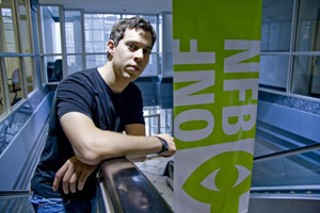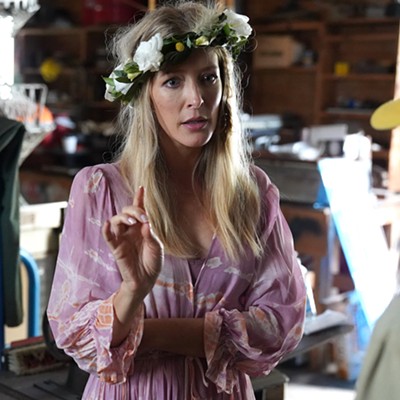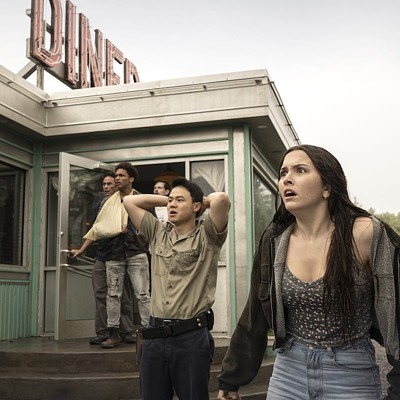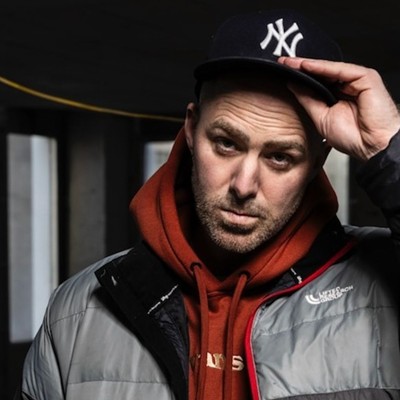"Since the end of the Cold War I think that many people believe that any danger posed by nuclear weapons has simply disappeared." It is this unfortunate truth, asserted by Halifax filmmaker Eric Bednarski, that lies at the heart of his debut feature-length documentary, The Strangest Dream, which screens Friday at 7pm, in Pugwash, on behalf of the Pugwash Peace Exchange.
The Strangest Dream focuses on the work of Polish-born physicist and Nobel Peace Prize winner Joseph Rotblat. Rotblat was part of the group working on the Manhattan Project to build the first atomic bomb. He left the project over moral objections and was the only physicist to leave on grounds of conscience. Rotblat felt scientists had an ethical obligation to be concerned with not just their work, but the application of their work. As such, Rotblat dedicated his life to finding peaceful applications for his atomic research, focusing on medical applications of radiation, as well as biological consequences.
Rotblat, along with philosopher Bertrand Russell, was instrumental in organizing the first Pugwash Conferences on Science and World Affairs in Pugwash, Nova Scotia in 1957. The conference sought to create awareness about the dangers of nuclear proliferation. The ability to wipe out all life was in the hands of the world's powers, and Rotblat and his cohorts were determined to urge them to "remember your humanity."
The annual Pugwash Conference, now in its 51st year, plays a central role in Bednarski's documentary. Bednarski, like Rotblat, feels "science has always been faced with this moral dilemma, and this is precisely what the Pugwash movement has endeavoured to address. Raising the level of awareness among scientists of the moral responsibility of the application of their work has been the goal of Pugwash from the start."
Bednarski's film leaves viewers with a sense that---due to a distance of time and space---many people are unaware of, or apathetic to, the existence of nuclear weapons. "There is a whole generation now who never experienced the Cold War, and who never experienced the peace movement that went along with it. Ironically, nuclear weapons are front and centre of many of the problems in the world today. The continued existence of these weapons in the world still very much affects us all. Raising the general awareness of the issue of nuclear weapons is the only way to change the indifference that seems so prevalent at the moment."
One of the most memorable scenes in Bednarski's film is of a memorial ceremony at the Hiroshima Children's Peace Monument. The scene re-tells the story of Sadako Sasaki. A victim of Hiroshima and dying from radiation, Sasaki died believing that if she folded 1,000 paper cranes she would be cured. A dedication at the monument reads: "This is our cry. This is our prayer. Peace in the world."
The scene highlights the gap in nuclear vigilance between the United States and Japan. The United States has built new nuclear warheads as recently as 2007 and possesses approximately 4,075 active nuclear missiles, while Japan remains one of the staunchest opponents of nuclear warfare, pledging to never manufacture or own nuclear weapons. Again, for Bednarski, it's a case of distance in time and space affecting the impact nuclear weapons have on people: "There is simply not the same level of awareness in North America as there is in Japan, where the bombs were experienced first-hand and the horror and suffering are still commemorated every year. It seems that in the US many people are still able to justify the dropping of the two atomic bombs on Japan by arguing that they ended the Second World War and thus saved the lives of hundreds of thousands of Americans.
"The very existence of some 27,000 nuclear weapons in the world is cause for concern in itself," says Bednarski. "There are now more nuclear weapons states than there were during the Cold War, as well as non-state actors seeking weapons of mass destruction and dirty bombs."
Bednarski hopes that his film will tell the important role that a Nova Scotia village played in helping the world remember its humanity. "The story of Pugwash and Joseph Rotblat is inspiring, and important, but still relatively unknown."














